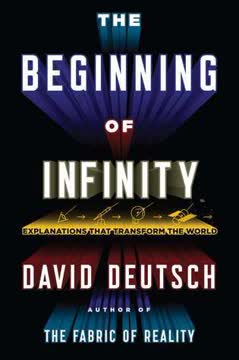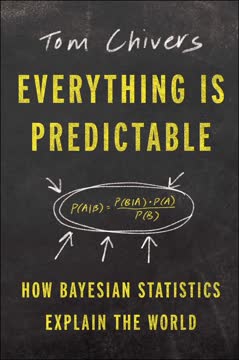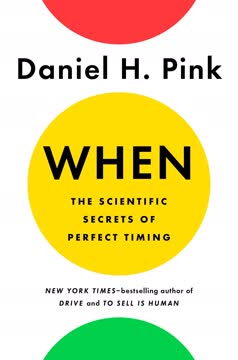Key Takeaways
1. The economy is a complex adaptive system, not an equilibrium system
The economy is not a closed equilibrium system; it is an open disequilibrium system and, more specifically, a complex adaptive system.
Complex adaptive systems are characterized by:
- Many interacting agents
- Non-linear relationships
- Feedback loops
- Emergence of macro patterns from micro behaviors
- Adaptation and evolution over time
The economy exhibits all these characteristics. It is constantly changing, with businesses and consumers adapting their behaviors based on new information and interactions. This dynamic nature makes the economy inherently unpredictable and resistant to equilibrium. Understanding the economy as a complex adaptive system helps explain phenomena like business cycles, market crashes, and technological revolutions that are difficult to account for in traditional equilibrium models.
2. Traditional economics relies on unrealistic assumptions and fails empirical tests
Traditional Economics has what computer programmers call a "garbage in, garbage out" problem.
Key flaws in traditional economics:
- Assumes perfect rationality of economic agents
- Ignores real-world frictions and delays
- Treats important factors as exogenous
- Focuses on equilibrium states
These assumptions lead to models that fail to match reality. For example:
- The "law of one price" is routinely violated in real markets
- Stock prices do not follow the predicted random walk
- Business cycles exhibit more volatility than models predict
Empirical evidence consistently contradicts core predictions of traditional economic theory. This suggests the need for new approaches that can better capture the complexities of real-world economic systems and human behavior.
3. Human decision-making is based on inductive reasoning, not perfect rationality
Humans are intelligent in their decision making, but intelligent in ways very different from the picture presented by Traditional Economics.
Key aspects of human decision-making:
- Pattern recognition and completion
- Use of heuristics and rules of thumb
- Learning and adaptation over time
- Bounded rationality and satisficing
People make economic decisions using inductive reasoning based on past experiences and observed patterns. They use mental shortcuts and approximations rather than complex calculations. This approach is well-suited for navigating the complex, ambiguous environments of the real world, but it can also lead to systematic biases and errors.
Behavioral economics research has revealed many ways in which actual human behavior deviates from the assumptions of perfect rationality, including:
- Loss aversion
- Framing effects
- Availability bias
- Overconfidence
Understanding these cognitive tendencies is crucial for developing more accurate models of economic behavior and designing effective policies and institutions.
4. Networks play a crucial role in economic systems and outcomes
Networks are an essential ingredient in any complex adaptive system. Without interactions between agents, there can be no complexity.
Key network effects in economics:
- Information and resource flows
- Contagion of ideas and behaviors
- Power law distributions
- Small world phenomena
The structure of economic networks influences outcomes in profound ways. For example:
- Innovation spreads through networks of researchers and businesses
- Financial contagion can propagate shocks through interconnected banks
- A few highly connected hubs often dominate industries (e.g. Amazon, Google)
Network theory provides tools for analyzing these interconnections and their consequences. Understanding network structures can help explain phenomena like industry concentration, the diffusion of technologies, and the resilience or fragility of economic systems.
5. Emergent patterns arise from micro-level behaviors in the economy
Macroeconomic patterns as emergent phenomena, that is, characteristics of the system as a whole that arise endogenously out of interactions of agents and their environment.
Key emergent phenomena in economics:
- Business cycles
- Price dynamics
- Income distributions
- Industrial organization
These macro-level patterns cannot be reduced to or predicted from the behavior of individual economic agents. Instead, they emerge from the complex interactions between many agents over time. For example:
- Boom-bust cycles can emerge from the collective behavior of businesses and investors, even without external shocks
- Power law distributions of firm sizes and wealth arise from competitive dynamics
- Market structures evolve as businesses adapt their strategies in response to each other
Studying these emergent phenomena requires new methodological approaches, such as agent-based modeling and network analysis, that can capture the dynamic, non-linear nature of economic systems.
6. Evolution is the algorithm that creates economic growth and innovation
Evolution creates designs, or more appropriately, discovers designs, through a process of trial and error.
Key aspects of economic evolution:
- Variation: New ideas and strategies constantly emerge
- Selection: Market forces determine which innovations succeed
- Replication: Successful strategies are copied and spread
- Adaptation: Businesses and consumers learn and improve over time
This evolutionary process drives economic growth and innovation. It explains how complex economic structures and technologies can arise without central planning or perfect foresight. The process is inherently unpredictable and open-ended, constantly generating novelty and increasing complexity.
Examples of economic evolution in action:
- Businesses experimenting with new products and services
- Investors trying different investment strategies
- Policymakers testing various regulatory approaches
- Consumers adopting (or rejecting) new technologies
Understanding the economy as an evolutionary system helps explain phenomena like technological progress, changing industry structures, and long-term economic growth.
7. Physical and social technologies coevolve to drive economic progress
The agricultural, industrial, and information revolutions can each be viewed as coevolutionary merry-go-rounds of advances in PTs leading to new forms of STs, which in turn were crucial for further advances in PTs, and so on.
Key types of technologies:
- Physical technologies: Methods for transforming matter, energy, and information
- Social technologies: Methods for organizing people and institutions
These technologies evolve together, with advances in one enabling progress in the other. For example:
- The invention of agriculture (PT) enabled larger settled communities (ST)
- The development of banking systems (ST) facilitated industrial investment (PT)
- Computer networks (PT) enabled new organizational forms like virtual teams (ST)
This coevolution explains the accelerating pace of economic and technological change over human history. Each breakthrough opens up new possibilities in both the physical and social realms, creating a positive feedback loop of innovation and progress.
8. Businesses evolve through variation, selection, and replication of strategies
Just as the churning of the evolutionary algorithm through the Library of All Prisoner's Dilemma Strategies created patterns of innovation, growth, and creative destruction, so too does the churning of evolution through the Library of Smith lead to these patterns in the real economy.
Key aspects of business evolution:
- Businesses constantly experiment with new strategies
- Market forces select successful approaches
- Winning strategies are copied and spread
- Industries undergo cycles of growth, maturation, and disruption
This evolutionary process explains patterns observed in real economies:
- The rise and fall of dominant firms and industries
- Waves of innovation and creative destruction
- The gradual improvement of business practices over time
- The emergence of new organizational forms and business models
Understanding business as an evolutionary process highlights the importance of experimentation, adaptation, and learning in economic success. It also suggests limits to how much the future of industries and economies can be predicted or controlled.
Last updated:
FAQ
What's The Origin of Wealth about?
- Exploration of Wealth Creation: The book examines fundamental questions about what wealth is, how it is created, and how it can be increased for societal benefit.
- Complex Adaptive Systems: Eric D. Beinhocker argues that the economy functions as a "complex adaptive system," akin to ecosystems or the Internet, rather than a static model.
- Evolutionary Perspective: Wealth creation is likened to biological evolution, suggesting that understanding this process can lead to better strategies for generating wealth.
Why should I read The Origin of Wealth?
- Groundbreaking Ideas: It challenges conventional economic theories, offering insights from biology and complexity science.
- Relevance to Modern Issues: The book addresses economic growth, innovation, and sustainability, making it pertinent for business leaders and policymakers.
- Accessible to All: Beinhocker's writing is designed for a broad audience, making complex ideas understandable without requiring a background in economics.
What are the key takeaways of The Origin of Wealth?
- Wealth as a Dynamic Concept: Wealth is created through processes similar to biological evolution, involving differentiation, selection, and amplification.
- Importance of Complexity: Traditional economic models often fail to predict real-world outcomes, highlighting the need for new frameworks like Complexity Economics.
- Interconnectedness of Systems: Technological, social, and economic systems interact and evolve, leading to emergent properties that shape wealth distribution.
What is Complexity Economics as defined in The Origin of Wealth?
- Dynamic and Nonlinear Systems: Complexity Economics views the economy as an open, dynamic, nonlinear system, contrasting with static models of Traditional Economics.
- Agent-Based Modeling: It emphasizes individual behaviors and interactions, leading to emergent phenomena not understood through traditional equilibrium analysis.
- Feedback Loops: The economy is characterized by feedback loops, where small changes can lead to significant impacts, highlighting unpredictability.
How does Beinhocker relate economics to evolution in The Origin of Wealth?
- Evolutionary Process: Wealth creation mirrors biological evolution, where differentiation, selection, and amplification drive innovation and growth.
- Darwinian Influence: Just as Darwin's theories transformed biology, they can reshape our understanding of economics, moving towards dynamic, evolving systems.
- Implications for Policy: Understanding the evolutionary nature of economies can inform better policies for fostering innovation and development.
What critiques does Beinhocker make of Traditional Economics?
- Static Models: Traditional Economics relies on static equilibrium models that fail to account for the dynamic nature of real economies.
- Unrealistic Assumptions: Assumptions like perfect rationality and complete information do not reflect actual human behavior, leading to flawed predictions.
- Need for New Frameworks: The book advocates for Complexity Economics, incorporating insights from various disciplines to better understand economic phenomena.
What is the significance of the Sugarscape model in The Origin of Wealth?
- Simulation of Economic Behavior: The Sugarscape model explores how economies can emerge from basic interactions among agents.
- Emergence of Wealth Distribution: It demonstrates how wealth inequality can arise from random initial conditions and agent interactions, leading to a Pareto distribution.
- Insights into Complexity: The model illustrates Complexity Economics principles, showing how simple rules can lead to complex behaviors without centralized control.
How does The Origin of Wealth define wealth?
- Dynamic Definition: Wealth is a product of complex interactions and evolutionary processes, emphasizing its fluid nature.
- Creation through Innovation: Wealth is created through innovation and adaptation of technologies and social institutions over time.
- Interconnectedness of Wealth: Understanding wealth requires looking at interconnected systems that contribute to its creation and distribution.
What are the best quotes from The Origin of Wealth and what do they mean?
- "The ideas of economists... are more powerful than is commonly understood.": This underscores the profound impact economic theories have on society, shaping policies and decisions.
- "The economy is a marvel of complexity.": It emphasizes the intricate nature of economic systems, which cannot be fully understood through simplistic models.
- "If we can better understand... wealth creation, then we can use that knowledge to develop new approaches to create economic growth.": This reflects the book's thesis that understanding economics can lead to effective strategies for prosperity.
How does The Origin of Wealth address the relationship between economics and other disciplines?
- Interdisciplinary Approach: Beinhocker draws on insights from biology, physics, and complexity science to enrich economic understanding.
- Complex Adaptive Systems: Economics is positioned within the broader context of complex adaptive systems, highlighting the relevance of concepts from other fields.
- Collaboration Across Fields: The book suggests that collaboration between economists and scientists can challenge traditional economic thinking.
What is the concept of "Big Men" in The Origin of Wealth?
- Historical Economic Selection: "Big Men" refers to leaders in early societies who influenced economic decisions, often prioritizing personal gain.
- Impact on Evolution: Big Man systems can slow economic evolution by distorting the selection process, leading to inefficiencies.
- Transition to Markets: The shift from Big Men to market-based economies is crucial for equitable resource distribution.
How does The Origin of Wealth relate to modern business practices?
- Adaptive Strategies: The book advocates for businesses to adopt strategies that allow for experimentation and responsiveness to market changes.
- Portfolio of Experiments: Companies should maintain a portfolio of competing Business Plans to increase success chances in a dynamic environment.
- Cultural Implications: A strong organizational culture supporting innovation and collaboration is emphasized.
Review Summary
The Origin of Wealth is praised as an insightful, well-written exploration of complexity economics. Readers appreciate Beinhocker's critique of traditional economic theory and his explanation of how economies function as complex adaptive systems. The book's interdisciplinary approach, combining economics with evolutionary theory and network science, is widely lauded. While some find certain sections overly long or disagree with specific points, most reviewers consider it an important and thought-provoking work that offers a new perspective on wealth creation and economic systems.
Similar Books










Download PDF
Download EPUB
.epub digital book format is ideal for reading ebooks on phones, tablets, and e-readers.




